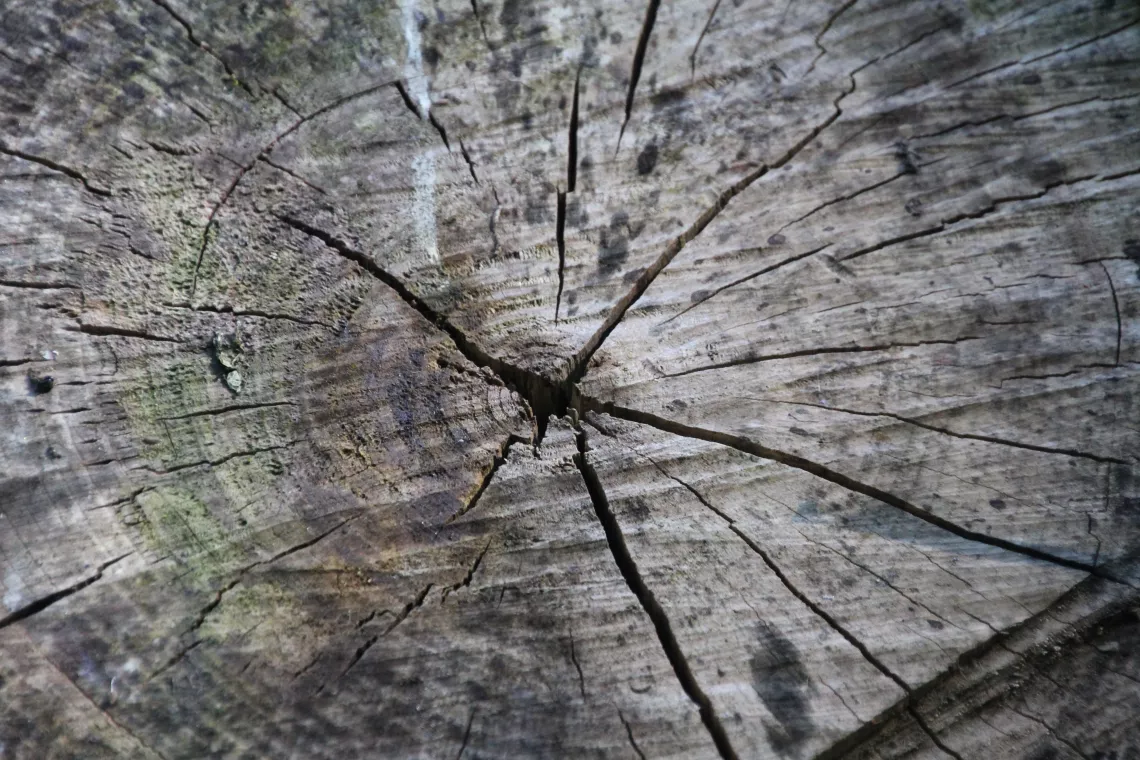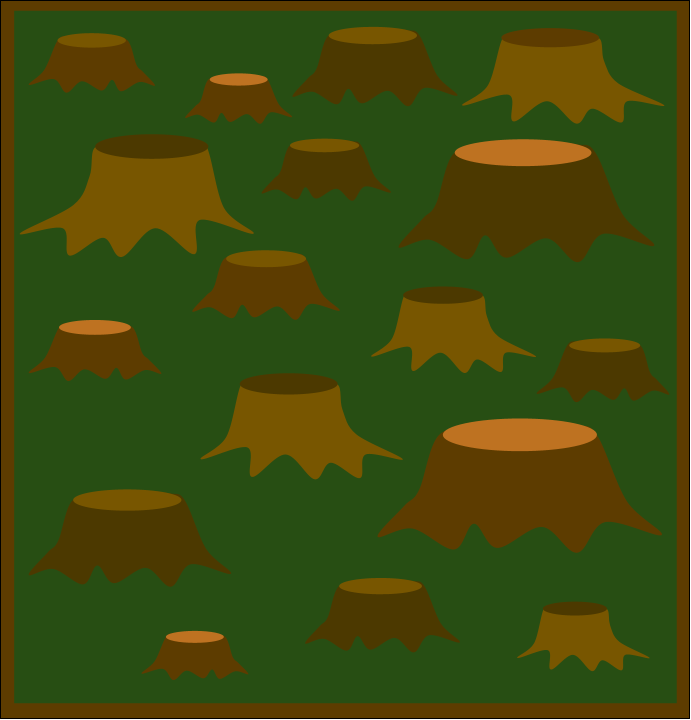
Photo Courtesy of Ashish Gupta
Increased Demand for Wood Products
Logging has become more lucrative and has increased over the past few decades, partially as a result of the increasing demand for wood products. Wood is a viable building material for construction because it’s light and insulates relatively well.[1] With rapid urbanization and migration to cities, builders usually opt for less expensive options in order to earn more profit and build more structures.[1] The need for more dwellings in cities is one of the main drivers of wood consumption for building. The average consumer is more concerned about climate change than ever before, and often chooses furnishings perceived to be more ‘eco-friendly.’ Consumers are purchasing wood furnishing over plastic and other human-made materials due to wood’s supposedly superior ‘eco-consciousness.’ Because of its association with the ever-evolving trend of ‘nature’ in home decor, wood is consumed in almost every part of the home.[1] However, in addition to wood, there are many eco-friendly and durable materials suitable for building, such as adobe, which is actually fire resistant.
Clearcutting
By definition, clearcutting means all or nearly all of the trees in an area are chopped down and removed.
The timber industry uses clearcutting for the majority of logging because it costs the least of any harvesting practices. However, they ignore the societal and environmental costs of clearcutting, and in recent years—due to the resulting negative public perception—the timber industry has attempted to mislead the public by ‘greenwashing’ their practices.
 The Timber Industry Misleads…
The Timber Industry Misleads…
Corporate industrial timber companies tend to focus on profit, even when it means deceiving the public. One way such companies do this is through the demonization of wildfires. Oftentimes, timber companies take advantage of public fears regarding wildfires and propose "solutions" that let them log under the guise of protection. However, many independent studies question the protective efficacy of these loggings, especially when they harm old growth forests. Old growth forests are typically characterized as having trees that have stood for a very long time and usually have thicker and more fire-resistant bark. These trees are logged due to the large amount of wood that builders can get from just one tree.[2] The trees that are planted to replace old growth are much more flammable and act as ‘kindling’ when a wildfire erupts, resulting in higher intensity fires in areas without old growth forests.[2]
Graphic Courtesy of Maureen Louie
Another way timber companies mislead the public is by pushing for post-fire "salvage" logging.[3] Timber companies remove the standing remnants of trees killed in a wildfire (snags) and say they are reducing the danger of another wildfire by removing flammable material. However, this practice can cause the opposite effect because it can encourage highly flammable invasive plants. Post-fire logging also destroys snag forests, an incredibly special ecosystem. These are valuable habitats teeming with rejuvenating flowers, shrubs, trees, and abundant wildlife, and can regenerate faster than a regular forest.[3] They grow back with stronger bark, which can result in less intense wildfires.[4]
“Thinning,” or the removal of some trees in an area, is another popular buzzword for industrial timber companies and agencies. They claim thinning reduces wildfires and promotes forest health.[5] This is true in certain situations. Those whose homes are in areas with high wildfire susceptibility greatly benefit from the reduction of trees in the 'home ignition zone' (up to 100 to 300 feet from the home, depending on slope) so fires spread less quickly, or even stop, giving firefighters the opportunity to defend the home. Firefighters use this technique around other structures as well. Shaded fuel breaks, which use thinning to create an area with less trees that could potentially become kindling, are a precaution used to protect buildings and communities from fires.
However, this doesn’t mean thinning is the right course of action in every situation. The timber industry has taken advantage of thinning’s practicality; under the guise of removing fuel for wildfires, timber companies continue haphazard and unsustainable practices. Thinning can actually cause fires to burn faster and with greater intensity, as the substantial decrease in shade results in higher temperatures, helping fires jump more easily[5].
Additionally, the decreased canopy heightens water evaporation from the soil, causing many issues. First, the decrease in shade leads many waterways to dry or shrink from the heat, further perpetuating the water crisis around the world.[5] The decrease in canopy also aids wind flow, which greatly increases fire spread. The fastest, largest, and most destructive fires are those spread by strong winds.
Case Study: A Logging Tragedy in the Pacific Northwest
Have you heard about the tragedy surrounding Charmin toilet paper?
Procter and Gamble, the parent company of Charmin, is currently clear-cutting Canada’s Boreal forests, which is the Northern Hemisphere’s equivalent of the Amazon rainforest.[6]
Between 1996 and 2015, over 28 million acres of Boreal forest were logged.[7]
The Boreal forest takes in and stores great quantities of carbon. When the trees are cut down, the carbon is released back into the atmosphere, acting as a ‘carbon bomb’. Procter and Gamble are creating such ‘carbon bombs’ by clear-cutting large areas of trees in these ancient forests with seemingly no remorse, essentially ‘flushing away the future.’
Here’s a quote from a Charmin executive regarding the use of pulp from recycled paper instead of their virgin pulp (from freshly cut trees): “Have you tried recycled toilet paper yourself? I promise you’ll enjoy [Charmin] much more.”[7]
[1] "The Wood Products Market Sees Increased Demand With Need For Eco-Friendly Materials In Building Construction, Furniture, And The Like As Per The Business Research Company's Wood Products Global Market Report 2021." GlobeNewswire, The Business Research Company, 7 Dec. 2021, www.globenewswire.com/news-release/2021/12/07/2347656/0/en/The-Wood-Products-Market-Sees-Increased-Demand-With-Need-For-Eco-Friendly-Materials-In-Building-Construction-Furniture-And-The-Like-As-Per-The-Business-Research-Company-s-Wood-Prod.html.
[2] Oregon Wild. "Old Growth Forests." Oregon Wild, oregonwild.org/forests/learn-about-oregons-forests/old-growth-forests. Accessed 25 July 2022.
[3] Russell, Robin E., et al. "Snag longevity in relation to wildfire and postfire salvage logging." Forest Service U.S. Department of Agriculture, 2006, www.fs.usda.gov/treesearch/pubs/26329.
[4] Mullen, Luba. "How Trees Survive and Thrive After A Fire." National Forest Foundation, fall 2017, www.nationalforests.org/our-forests/your-national-forests-magazine/how-trees-survive-and-thrive-after-a-fire.
[5] Hanson, Chad T., and Dominick A. DellaSala. "More Logging Won't Stop Wildfires." Oregon Wild, 23 June 2015, oregonwild.org/about/press/more-logging-won%E2%80%99t-stop-wildfires.
[6] Vize, Shannon E. "Charmin Toilet Paper Really Hates the Environment." Femestella, 11 Oct. 2021, www.femestella.com/charmin-toilet-paper-impact-on-environment/.
[7] "Stop Proctor & Gamble from Flushing away Our Forests." Natural Resources Defense Council, Inc., www.nrdc.org/stop-procter-gamble-flushing-away-our-forests. Accessed 15 Oct. 2022.
Learn More!
Fungal Networks Biodiversity Climate Change Carbon Storage Solutions & News Connections